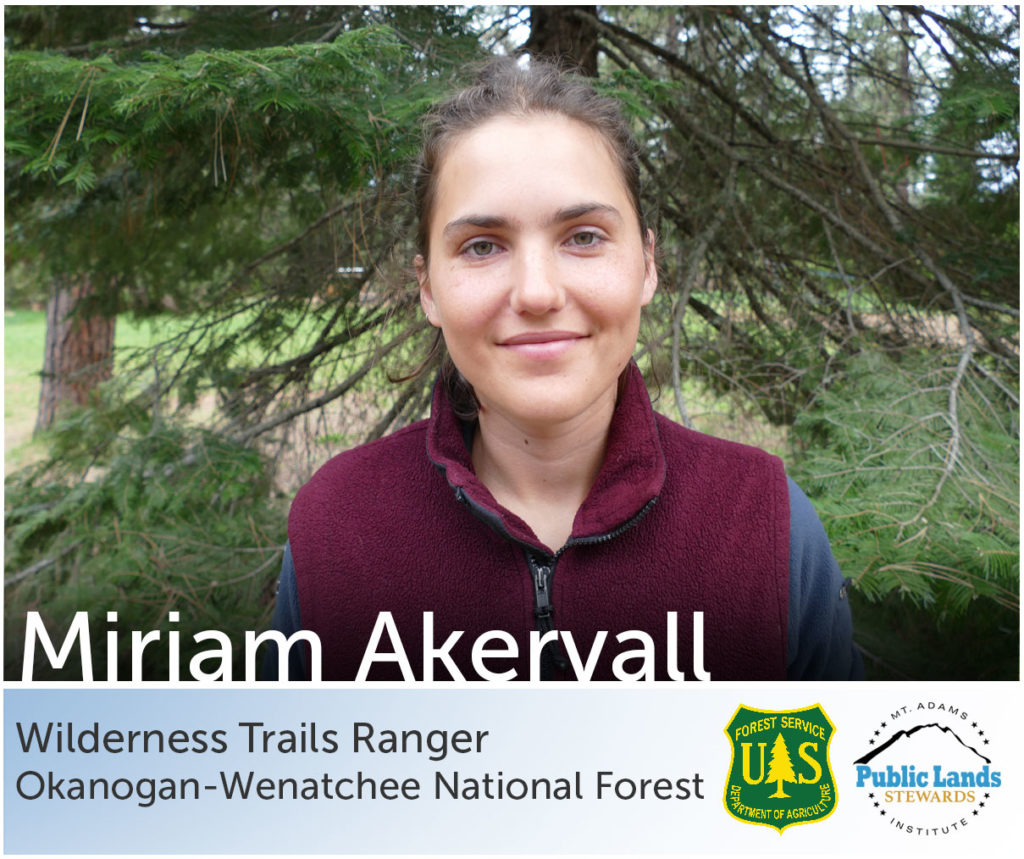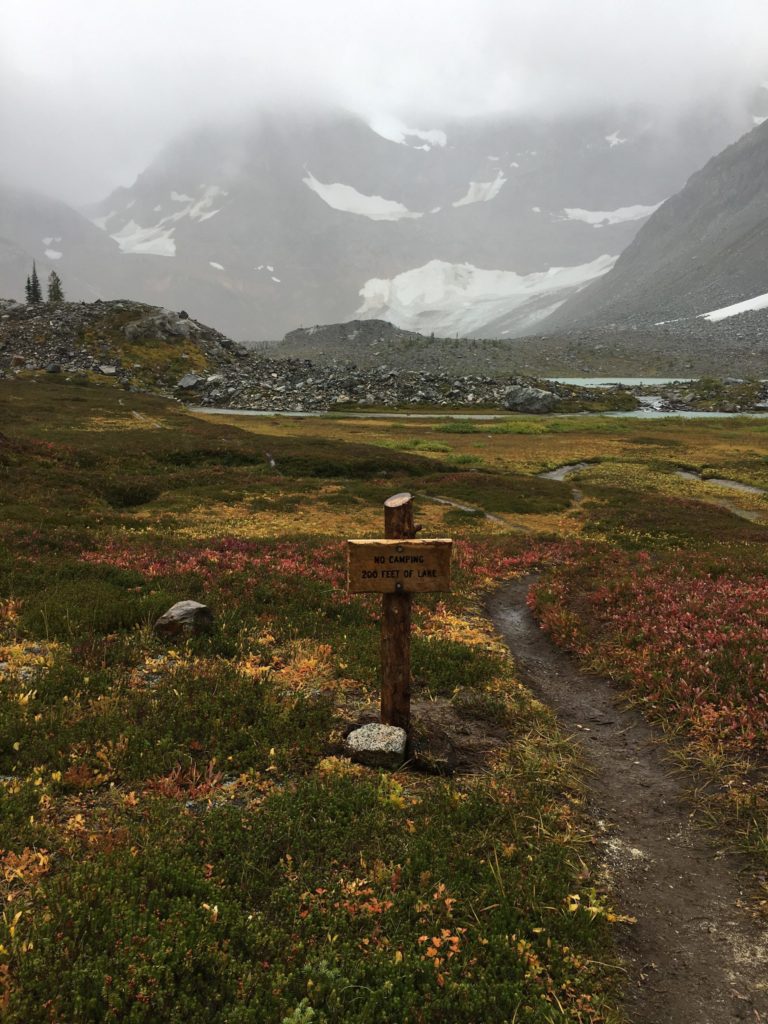
September cast a sharp visible distinction on the color wheel of the alpine basin where I’ve spent a good portion of my time as a Wilderness trails ranger intern for the Chelan Ranger District. Fields of bear grass in the meadows above Lyman Lake slim their bulbous form and light their leaves in bright golds. The heather fades to orange and wild blueberry bushes trade their deep green hue for an apple red. The sight of powdered tops on Cloudy Peak, Dumbbell, Chihuahua and Red Mountain become regular morning greetings, though the bulk of the dusting still melts throughout the day. The sweltering summer months already seem a distant part of early season memory, along with the first smattering of callouses back in May.
On my last hitch to Lyman I hiked nine miles from Holden Village to finish a few projects in this usually low-travelled area, now more heavily trafficked by PCT hikers on a re-route circumventing the Bannock Lakes Fire. For five days I filled my time cleaning drains, putting up signs to protect sensitive riparian shores from camping, and hiking the trails around Cloudy Pass, Upper and Lower Lyman lakes, offering information and advice to passing hikers as needed.
As I found myself on the tail end of a persistent two-day downpour, reviving my socks from frozen rigor via frying pan before putting them on, I was struck by the multiplicity of these mountains. How the range of experiences I’ve had over these past five months can all be simultaneously true to the same slice of Washington geography: building trail through the Domke Mountain burn area littered with snags and many inches deep in ash (and leaving with the dirt-stache to prove it); learning to navigate the boulder field that leads to Upper Lyman lakes at first mostly covered in snow and then not at all; pointing sweaty hikers to my favorite swimming spot below Cloudy Pass and later suggesting sleeping bag layering techniques; finding my lunch tortillas fried to a crisp from baking in a car during Chelan’s 110 degree heat; and trying my hand at a few glissading steps while descending the Spider glacier.

Morning work at Upper Lyman.
I have learned to point that same kaleidoscope lens at myself and appreciate its multiple views. We are products of the natural world and so also multitudinous, although we are sometimes reluctant to think so. When I was eleven I refused to step foot in the kitchen in an impassioned one-tween revolt against gender roles. A feminist who fulfilled female stereotypes could not exist in my premature understanding of equality.
Today I look forward to the days I can spend an afternoon mulling over new recipes and tweak my backcountry meal plans. And I am learning that being a cis-gender woman working in what is in this country’s post-colonial corner of history considered a male dominated field can present both nuance and beauty as well as certain hurdles. Thankfully, my idea of female empowerment has evolved to embrace contradictions rather than rejecting qualities that could be perceived as weakness, even when the only jury is the sixth grader in my head. In a kaleidoscope view, contradiction is simply another word for variety, just like larches can be appear evergreen or brilliantly yellow depending on your timing, neither of these being any more or less the tree’s true color.
I’ll swing tools and dig tread all day and sometimes bring a knitting project to fill downtime in my tent. On weekends, chances are practically equal of finding me sweating through a hike or practicing needlework on spare scraps of cloth. I can’t always muscle a log out of the trail in the manner of my more experienced coworkers, or one naturally endowed with more upper body strength, but I can get it done with patience and technique tailored to my ability. Sometimes this last truth drives my inner eleven-year-old to infuriated frustration, but the adult knows that to be a happy human on this planet it is part of the deal to accept and even love the things we cannot change.
A few months back, a man approached me and two female coworkers to tell us that our packs looked “pretty big for little girls.” I was reminded that to certain eyes our very presence is an anomaly. Despite the fact that we complete the same tasks as our male counterparts, and despite that our trail crew is evenly composed of men and women, there may always be someone who sees three women exit a Forest Service vehicle and feel compelled to convey their amazement. I smiled, realizing the man thought he was offering a compliment, and finished strapping the Pulaski to my pack. His generation speaks a different language than mine.
On the sixth day of my hitch to Lyman Lake, the same two women, Mt. Adams Institute Wilderness rangers from the Entiat District, Emma and Hannah, joined me to pack up the seasonal Forest Service basecamp at Lyman Lake. Amenities there include a large Cabela’s cook tent whose dual function is to offer shelter from the bloodthirsty routines of mosquitos and biting flies in the early-season, as well as from the curtain of late-season showers to which my socks fell victim to that week.
We split the tent into three 20-pound bundles and lugged it down to Holden strapped on top of other tools and personal gear. Three hours later we arrive, exhausted and ravenous, to the small guard station where we are able to use a stove top kitchen to remedy the caloric price of our hard work. We whip up enough pancakes, hash browns, and eggs to feed a small battalion. When the ferry drops us off in Chelan, we make a bee-line for pizza and laugh over beers that in the end we did pretty good for little girls.

